Ethiopia’s largest current development project is the “Great Ethiopian Renaissance Dam” (GERD), a hydroelectric power plant that will dam the part of the Blue Nile River’s source. The billionaire project has been underway since 2011 and is 83.9% complete.
However, it has not been a peaceful construction, since the Nile River is one of the main water suppliers of the African continent and its damming would affect the water reservoirs of other countries by decreasing the flow of water, mainly from Sudan and Egypt.
Water scarcity causes conflicts around the world due to unequal access and use between populations and nations. About ¼ of the world population suffers from the water shortage, for the use on its productions, for access and vital human use. Thus, more water conflicts tend to happen in the future.
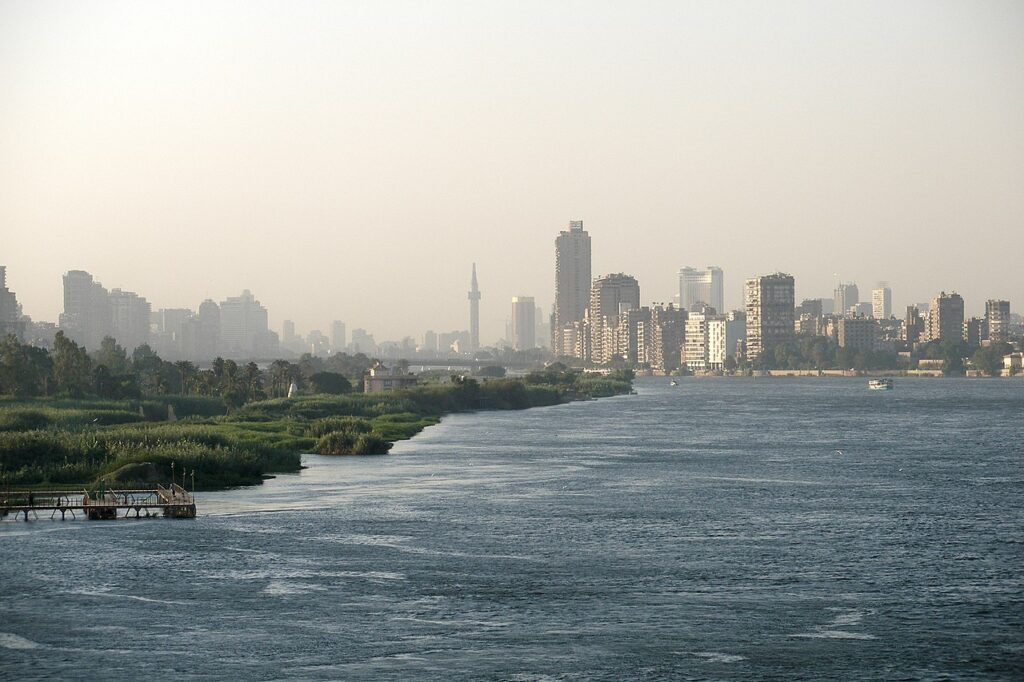
What is the “Grand Ethiopian Renaissance Dam” (GERD)
Ethiopia has one of the major current hydroelectric power generation and damming projects in the Blue Nile River area, the “Great Ethiopian Renaissance Dam”.
With a budget of US$4.2 billion, the project started in April 2011 as a way to strengthen and boost the Ethiopian economy, that had been growing but suffered great fall with the impacts of the military conflicts in the region.
The expectation of GERD’s energy production is to double the national matrix to 5,000 MW, becoming the largest plant in the African continent. In addition, it is expected that, when finalized, the project would allow a growth of 5% of the country’s GDP, seeking to export and give more base to the agricultural production that suffers from the instabilities of droughts.
The goal is to enable greater mechanization of agriculture, increase food security of the population, improve the rural lifestyle and alleviate poverty affecting Ethiopia.
Agriculture represents 80% of jobs and about 45% of national exports, being the basis of the economy. However, in recent years, the lack of water is one of the major obstacles to the growth of production and consequently of the country.
After 2020 and the military conflicts with the Tigray People’s Liberation Front of the Amhara region, about 400km from the capital, the population is suffering from high levels of poverty and food insecurity, with 400,000 people on the hunger map and about 55% of the population without access to electricity.
Agricultural production, however significant for the national economy, is still precarious in relation to its export potential. Many produce subsistence agriculture, without much access to the international market.
The GERD is an attempt to further develop Ethiopia as one of Africa’s major agricultural exporters, and may allow economic advancement to technological progress and expansion of the production chain.
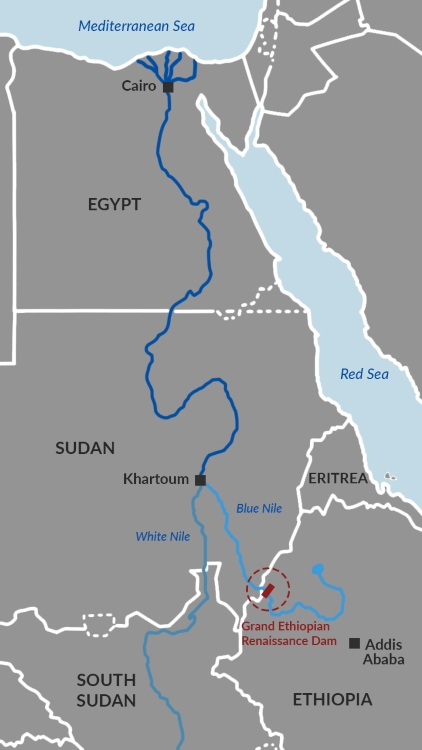
Crédito: Institute for Security Studies – Africa
How the construction of the GERD can affect the flow of water from the Nile towards Egypt and Sudan
With the source of the Blue Nile River in Ethiopia, about half of the tributary is in the territory of the country, confluing with the White Nile River in Sudan and following until it flows into the Mediterranean Sea on the Egyptian coast.
GERD is positioned near the border between Ethiopia and Sudan, damming and isolating the source of the river. This would isolate 85% of the Nile River’s water supply for Ethiopia’s exclusive production, giving it the power to regulate the drain on other countries.
Egypt is extremely dependent on the Nile in several spheres, 97% of the national water supply is from the river, and 85% of this supply is for agriculture of the country and represents 46.3% of the GDP.
In 2020, Egyptian leaders positioned themselves in different ways against the construction of the dam. In May, the President of Egypt, Abdel Fattah al-Sisi, called on the armed forces to be on alert after conflicts with the Ethiopian government flooded the dam even without permission, and after offenses to the Egyptian president calling him an “American dog”. In this month, there were military exercises moved by Sudan and Egypt calling their armed forces “Guardians of the Nile”.
In June of the same year, at a meeting of the UN, the representative of Egypt made a speech on the injury from Ethiopia of the 4th article of the Helsinki Rules, which states that all countries must have equal access to the waters of the river basin and prohibits the limitation of national sovereignties.
On the other hand, the government of Ethiopia claims that Egypt has 55 trillion cubic meters of water in the Nubian Sandstone aquifer, and that instead of relying so much on the Nile they should exploit the potential of their groundwater.
However, the use of these waters is not easy to access since it would be an underground exploration and is not a renewable water stock, besides Egypt being in an area compromised by the phenomenon of groundwater salinization by the proximity to the Red and Mediterranean seas.
The Egyptian fear is based not only on the decrease of the Nile, but also on the geopolitical role that Ethiopia will gain by owning a project as grand as GERD, it can remove the centrality that Egypt has in politics, in the international market and with the African countries themselves.
Sudan and Egypt fear that, if there is no cooperation between the countries in the management of the project, Ethiopia will be free to continue filling its reservoirs even in periods of drought, not following the agreement to remain proportional to the dams of other countries.
GERD can produce US$260 million per year if it enters a cooperative system among the three actors, with a loss of only US$1 million to supply agricultural productions. Now, maintaining the proposed structure of being an independent, national Ethiopian project, energy production would generate about US$115 million per year and reduce Egypt’s energy production by 11% due to the decrease in water flow.
Cooperative projects already exist in the Senegal River, with the Organization for the Development of the Senegal River Basin. Including the Republic of Guinea, Mali, Mauritania and Senegal, the agreement was created in 1972 after years of drought that affected the region’s river, systematically establishing the equitable division between its states-members of the buildings and infrastructure built in the river basin and the benefits of the resulting water resources.
Therefore, the construction of GERD has several geopolitical implications since it changes the current functioning system of the relationship between Sudan, Ethiopia and Egypt. It is not only an investment structure for Ethiopia’s national growth, but a control over one of the main sources of the river that provides water to a developing and desert region.
Where there are more water conflicts in the world today and why they are going to increase
Water scarcity is a problem that has been worsening in recent years, with the impacts in the environment several areas suffered from severe droughts that damaged their access to water.
About 40% of the world’s population, equivalent to ¼, suffer from lack of access to water. This situation puts populations at risk not only because they do not have one of the basic sources for human life, but because they migrate to other countries where the situation is better. There are around 700 million people at risk of displacement in 2030 because of poverty and scarcity.
Hydropolitics is a sphere that has gained a greater role in public policy management, especially since 2012 when water poverty entered the list of Global Risks by Impact of the World Economic Forum.
In the 20th century, water use grew more than twice the global population growth, without a spotlight for the long-term impacts of this overuse. In 2017, the world recorded many droughts that led to the worst humanitarian crisis since World War II, where 20 million people in Africa and the Middle East migrated from their countries for food insecurity and regional conflicts for limited access to water.
Several cities already apply water rationing to the population such as Lima, Cape Town, Rome and several municipalities in Brazil.
The BBC interviewed the conflict and water scarcity impact specialist Peter Gleick, director of the Pacific Institute of California, which raised 926 military conflicts since the XVIII century B.C and the beginning of the Babylonian Empire. He characterized the motives that incite water strikes:
“We categorised water conflicts in three groups,” says Gleick. “As a ‘trigger’ of conflict, where violence is associated with disputes over access and control of water; as a ‘weapon’ of conflict, where water or water systems are used as weapons in conflicts, including for the use of dams to withhold water or flood downstream communities; and as ‘casualties’ or ‘targets’ of conflicts, where water resources or treatment plants or pipelines are targeted during conflicts.”
Peter Gleick for BBC
Most water conflicts are due to agricultural and livestock production, which represents 70% of the world’s use of fresh water and is the economic base of several developed and developing countries.
An example of this type of conflict began in 2019 in the Tigris and Euphrates River Basin, which crosses Turkey, Iraq, Syria and Western Iran. Much like the conflict in Ethiopia-Sudan-Egypt, Turkey began to fill its hydroelectric reservoir at the beginning of the Tigris River, which affected the flow of water in the other three countries. More than 1.5 km wide, the Turkish dam of Ilisu decreased about half the river flow in the Iraq.
This is just one of the approximate two thousand possible conflict points for access and use of water worldwide. Some of the known water conflicts around the world are:
- The Indus River, the Ganges and the Sutlej are the sources of water for Pakistan and India, with the spring in the mountains of Tibet under the Chinese government. The conflicts between China and the Indian border for access to water have left 20 Indian soldiers dead. China still has structures to be built that will slow the flow of the river.
- The conflict in the Aral Sea, involving Kazakhstan, Uzbekistan, Turkmenistan, Tajikistan and Kyrgyzstan, was due to the drought of the Syr Darya and Amu Darya rivers flowing into the sea. The deregulated use of rivers for irrigation of cotton plantations dried up the sea, in addition to dams built decreasing access to water in the countries.
- Because it is a desert region, there are few sources of water for the countries, and the Jordan River conflict between Israel, Lebanon, Jordan and Syria has already caused several invasions to see who controls the watershed.
Since the early 2000s several representatives, mainly from the Middle East, have already identified that competition for water made it difficult to reconcile the use for food production, human use and maintenance of ecosystems. Around 10% of annual water use is used for human needs, provided unevenly as there are areas filled with basins and desert areas that cannot even sustain human life.
The conflict of hydropolitics is tense while the increase of structures and development demands more water but its availability does not increase. That is, the less water, the bigger the political fights.
How to prevent future disputes on water
Water exploitation does not tend to decrease. But more conscious consumption in production and greater management of resources and policies can be the way out for conflicts and at-risk populations.
In several countries, the improvement of infrastructure can already allow a lower loss of water that could be used, for example Iraq loses two-thirds of its water supply due to damaged plumbing.
Several Ngos are being created and are mobilizing to monitor possible water wars and they point out the importance of government management to deal with water resources more responsibly, reducing corruption and increasing equality and social cohesion so that there is no exodus.
The cooperation agreements in the river basins are also one of the exits to the conflicts armed by water. But there are specific regional political relations that make this process difficult. For more than a decade, the UN has been trying to implement a Global Water Convention to discuss the use and maintenance of transboundary rivers and lakes, but only 43 countries have joined.
In addition, technological advances allow sea waters to be desalinated and waste water from various processes to be recycled, which increases the national reservoir and reduces the insecurity of scarcity.
Saudi Arabia, for example, has 50% of its water supply through desalination; and studies estimate that by using only these techniques, it would be possible to reduce the global water shortage from 40% to 14%.
This is the most hopeful outlet for more peaceful water exploration, since freshwater is finite and desalination will only use the waters of the seas and the “recycling of water” does not need more basins, only reuses.
The development, the exploration and the economic growth move with the geopolitical system, always updating the dynamics and the relations. However, while nations face off on resources, the population is often left out while suffering from the impacts of conflicts.
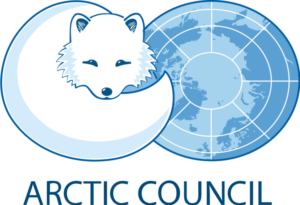
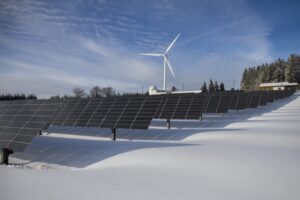



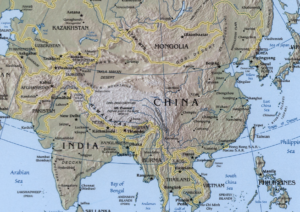
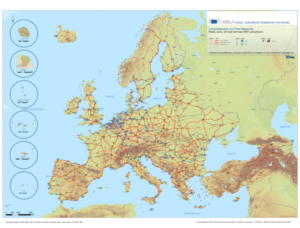



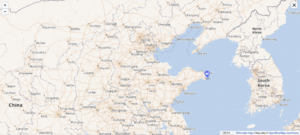

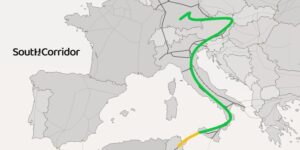



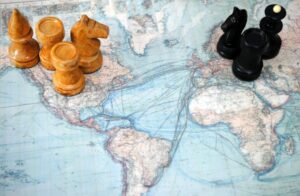

[…] American company to build subsea telecommunication cables to connect Singapore with France, through Egypt and the Horn of […]
[…] were disagreements between Uzbekistan and Kazakhstan with the construction of this dam, since it will reduce the flow of the river and affect the agricultural production of cotton and […]